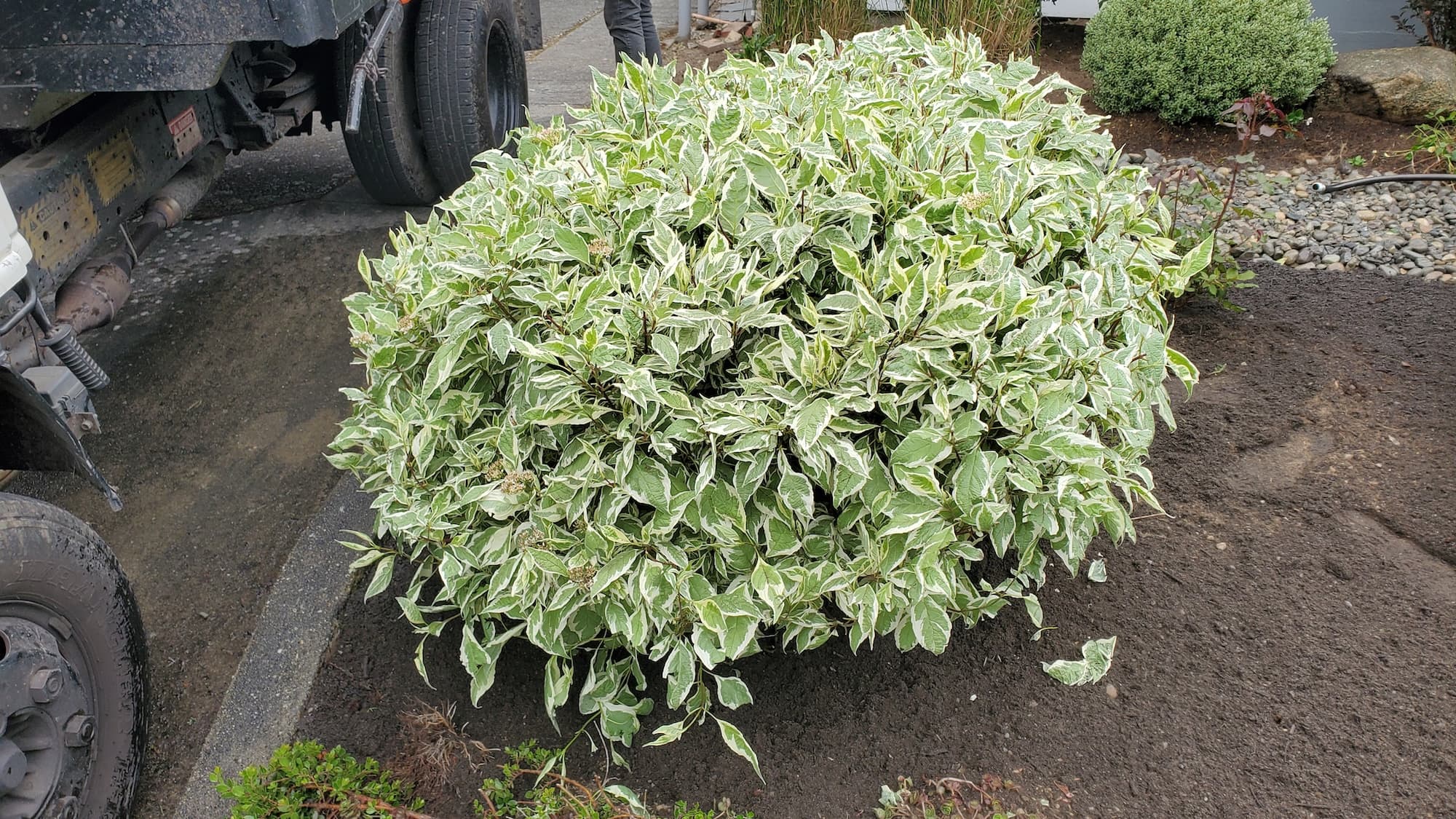West Seattle Azalea Trimming
Homeowner’s Issue
West Seattle yards present a unique mix: marine-influenced soils, heavy winter rain, and pockets of deep shade under mature maples and cedars. Azaleas in neighborhoods from the Junction to Admiral and down toward Alki or Lincoln Park often deal with acid, well-draining topsoils over compacted glacial till, summer drought stress, and salty wind exposure on west-facing slopes. That combination means plants can look lush one spring and leggy or mossy the next.
Homeowners here usually want neat, flowering shrubs that play well with steep driveways, limited curb appeal space, and HOA sight-lines. Common problems we see: overgrown, twiggy azaleas that bloom poorly; wet crowns and root stress in low spots; moss and ivy creeping in shaded beds; and improper pruning that removes next year’s flower buds. Timing matters — prune right after bloom to avoid cutting buds — and mulch plus careful soil building goes a long way. We focus on sustainable, non-chemical methods: hand and shear pruning, strategic thinning to improve airflow, compost-amended mulch to lock in moisture, and green-haul options for clippings to keep your yard tidy and eco-friendly.
Our Quality Service
- Onsite assessment of plant health, light exposure, and drainage specific to West Seattle microclimates.
- Pruning with clean, sharp hand tools and battery-powered trimmers when needed; we avoid chemicals and herbicides.
- Reshaping and thinning to preserve natural form while improving bloom and airflow.
- Local timing: we schedule pruning after flowering to protect next season’s buds and avoid wet-season damage.
- Typical timeline: small group of azaleas (3–6 shrubs) — 1–3 hours; larger jobs scheduled by estimate, usually same-week or next-week bookings depending on season.
Benefits: safer yards during storm season, better curb appeal on tight West Seattle streets, reduced ongoing maintenance, and stronger plants that cope with local rainfall patterns and slopes.
What’s Included
- Detailed assessment and pruning plan.
- Deadwood removal, thinning, and shaping to promote bloom and structure.
- Clip collection and tidy cleanup.
- Soil check and mulching (optional add-on).
Options / Upgrades:
- Mulch + landscape fabric at planting lines (where appropriate).
- Organic soil amendment and compost top-dress.
- Manual weed control and ivy removal (no herbicides).
- Haul-away vs. green-bin/compost drop-off options.
Before & After / Expectations
- Expect some noise and green waste during work; we contain debris and broom clean paths and patios.
- Access: narrow driveways or steep slopes (common in Fauntleroy and Admiral hills) may add time — we’ll note this in your estimate.
- Timelines: single visits are quick; multi-bed renovations may take half-day to full-day.
- Aftercare tips: water well in the drier summer weeks after pruning, refresh mulch in fall, and remove invasive ivy early spring. Watch for moss in shaded, wet pockets and keep airflow by thinning lower branches.
FAQs (3–5)
- Q: When is the best time to trim azaleas here?
A: Right after flowering — usually late May–June in West Seattle — so you don’t cut next year’s buds. - Q: Do you use herbicides?
A: No. We use sustainable methods only: hand-pull, organic soil amendments, and mulching. - Q: How long will the crew need?
A: Small groupings take 1–3 hours. Larger beds require an on-site estimate. - Q: Do you haul clippings?
A: Yes — choose haul-away or we can leave clippings for green-bin/compost drop-off.
Call to Action
West Seattle homeowners: ready to tidy up your azaleas the right way? Book a free estimate and get a same-week or next-week slot in most seasons. Local knowledge matters — we know Alki winds, Lincoln Park shade, and steep Admiral lots. Email neatandtidyseattle@gmail.com to schedule.










